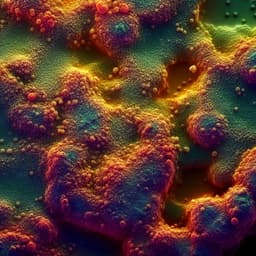
Earth Sciences
EXTRACELLULAR POLYMERIC SUBSTANCES (EPS) AND EXTREME ENVIRONMENTS
A. W. Decho and V. Thiel
Dive into the fascinating world of extracellular polymeric substances (EPS) with research conducted by Alan W. Decho and Volker Thiel. Explore how these molecular matrices play a vital role in biofilm formation and the survival strategies of extremophiles in harsh environments. Discover their impact on biomineralization and sediment stability, revealing the resilience of life in extreme conditions.
~3 min • Beginner • English
Related Publications
Explore these studies to deepen your understanding of the subject.







